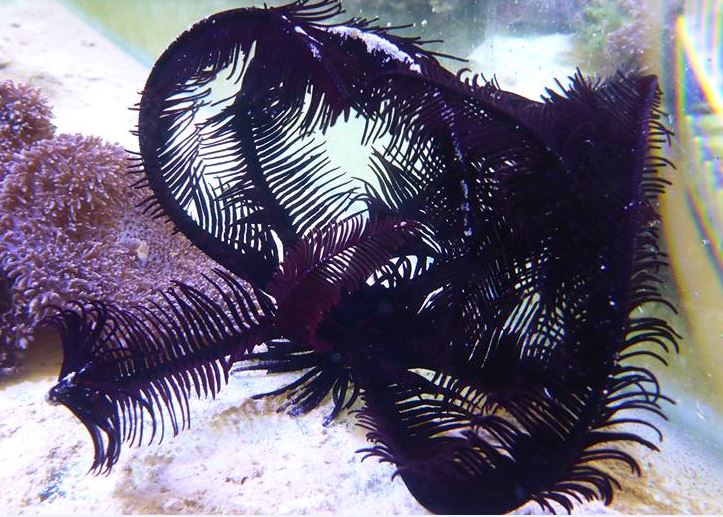Summary
Cenolia glebosus, commonly called a black feather star, is a member of the Comatulid order, an order with the highest grade of evolutionary development achieved within the class Crinoidea (Figure 1). It is an un-stalked feather star that is distinguished from all other species in Cenolia by the presence of ossicle nodules along the oral side of the central disk (Rowe et al 1986).
It is found along the Eastern Coast of Australia, ranging from Mooloolaba to Port Stevens, in sub-tropical coral outcrops with only 30 known occurrences since 1976. Not much is known about this species but there is a well of knowledge about its order and family. Some Key Features of Comantulids and Comasterids:
The Adaptation and Development of the Cirri
The Adaptation of Tube Feet for Suspension Feeding
Evolution of Different Feeding Positions
Symbiosis and Commensalism
Evolution of Locomotion
Chemical Defense System
In order to expand our knowledge of this unstudied species, C. glebosus was observed in an aquarium setting for behavioural traits, habitat preferences and commensalism. These findings and more can be found on the following pages.
 |
| Figure 1 -Cenolia glebosus in UQ Marine Aquarium. Photo taken by Sophie Horsfall |
|